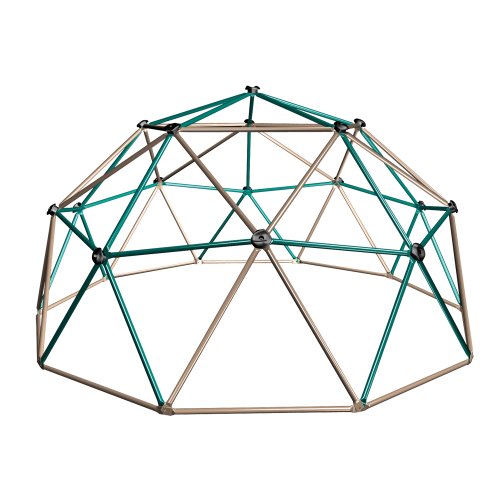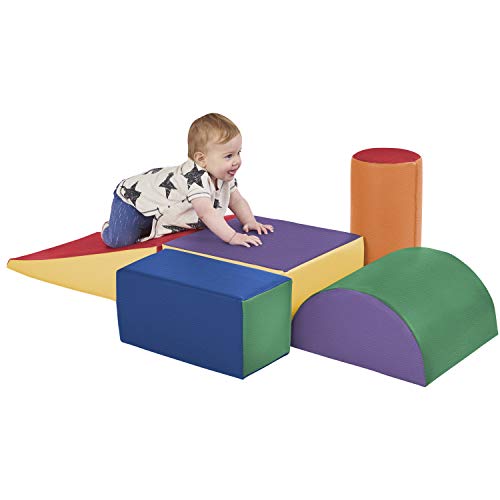favorite playroom supplies + equipment to create a “yes space”to nurture your child’s development
“Be careful what you teach. It might just interfere with what they are learning.”
Magda Gerber
This is the case with everything, isn’t it? The most impactful things we learn in life aren’t through structured direction.
.
Especially in early childhood, it is the lessons learned through experience, doing, hands-on exploration, trying and failing and trying again, the internal desire to go for something and discover it without any of us directing them along the way - this is where the magic happens.
.
How to? Make the opportunities available, create safe spaces where there is no need to interrupt with a “no” or “stop” or “don’t”, drop expectations, toss the perfection, and consider ourselves observers and guides versus directors or teachers along the way.
My favorite products for your “Yes Space”?? There are countless options and no “right” choices, yet here is what makes the cut in my pediatric occupational therapy eyes:
Playroom equipment + toys I love
1. SOFt surfaces covering the floor - Mats and crash pads.
Soft surfaces enable kids to explore, go upside down, move freely, have a space to not worry about banging their bodies on the ground as frequently or painfully as less forgiving surfaces.
Maneuvering space enables littles feedback about their body schema, temporal-spatial awareness, and visual perceptual skills. Both static (standing still e.g. mats) and dynamic (crash pads that will move up and down, side to side while the child climbs) surfaces are valuable for a little’s developing anticipatory reactions, balance, and center of gravity.
2. Climbing opportunities.
An option where kids can climb, pull, use back and forth movement of the arms and legs (“reciprocal movement”) and motor plan. Motor planning is the ability to have intention, organize the body, and execute movement.
Climbing is rich in proprioceptive input: input to the joints and muscles that is organizing and integrating to the nervous system. Read: calming, regulating, all of the good stuff.
Structures create vestibular opportunity via ability to hang upside down, sideways, move head in different positions
Navigating space enables kids to learn their body and interaction with the environment, planning, coordination, and motor planning required for all daily life skills that will later make life easier for everyone.
3. building and manipulative objects.
Building opportunities and materials to stack, sort quantity, decipher what shapes create a foundation and which are best higher.
Some of the many things littles are learning: bilateral integration, fine and gross motor object manipulation depending on size of the building items, visual perceptual skills, visual motor skills,
These items do not need to be fancy! Think cardboard boxes - remember the magic of cardboard box cities?
4. Multi-Purpose Objects.
Tunnel. The simple, pop-up tunnel: easy to store, easy to travel, all of the activity options: toss a ball through to the other side, lay in it and roll side to side, crawl through, hide during hide and seek, use as part of an obstacle course, the list goes on.
Climbing objects/foam blocks. These climbing surfaces shown can be used to build a fort, to climb, to create an obstacle course, as “towers” to kick down or somersault into.
Parachute. We have used the parachute as a cozy “fort” to sing hello/goodbye songs and be together, as a “storm” coming in to capture kids during chase game, put over the dome climber to create a cozy oasis, the typical everyone-around-the-parachute to try to motor plan and pop it up, then crawl in as it settles around us- so many options.
Things I don’t love
Lots of little objects and visual “clutter.” A more clear, organized environment helps kids organize their mind in a way that they can focus on rich play themes and experiences.
Noisy, lit-up, bright, busy toys. A go-to phrase is “Passive toys make active children” as we want the child to act on the object to figure out the world and enjoy, not for the object to entertain the child and introduce a level of stimulation that makes a tough competition for anything else.
Screens. This is likely a given and such a source of parental guilt - hairy topic. As an OT, I see the unraveling of development that can happen with screen time, especially with kids who may have attentional or regulatory vulnerabilities. This is the most “active” toy/activity we could present them with and lights up the brain in stimulating ways that, again, make it tough for anything else to compete with. Watch your little before and after the screen time - is it helpful for their regulation? For their impulse control, their ability to wait? Is it helpful for your relationship with them? I am all about balance and dropping the rigidity of all/nothing stances on screen time, yet I can’t muster the justification to recommend any of the screens at all.
Toys that do not help littles make sense of the world. We want toys to be as realistic as possible and toys that help kids make meaning of the world they’re growing up in. Toys that help them to figure out the properties, make sense of materials, and ultimately develop a wide secure foundation of “what is” in order to kick off their creativity and imagination. Natural materials, natural cause/effect. Helping littles to make sense of the properties in the world translates to symbolic play, higher level thinking, even relating to peers.
“Academic” toys (before age 3 especially). We don’t want to introduce letters and numbers prematurely - we want the exploration, the taking-in of all visual space, using big body movement and gaining rich sensory motor feedback through it.
Sources
Ayres, A. J. (1979). Sensory integration and the child. Los Angeles: Western Psychological Corporation.
Ayres, A. J. (1985). Developmental dyspraxia and adult-onset apraxia. Torrance, CA: Sensory Integration International.
Ayres, A. J. (1989). Sensory Integration and Praxis Tests manual. Los Angeles: Western Psychological Services.
Carole K. Ivey, Shelly J. Lane, Teresa A. May-Benson (2014). Interrater Reliability and Developmental Norms in Preschoolers for the Motor Planning Maze Assessment (MPMA). Am J Occup Ther 2014;68(5):539-545. doi: 10.5014/ajot.2014.012468.














